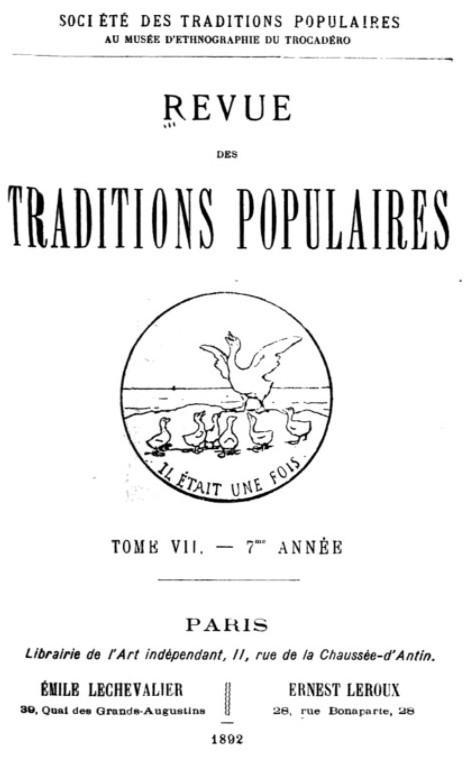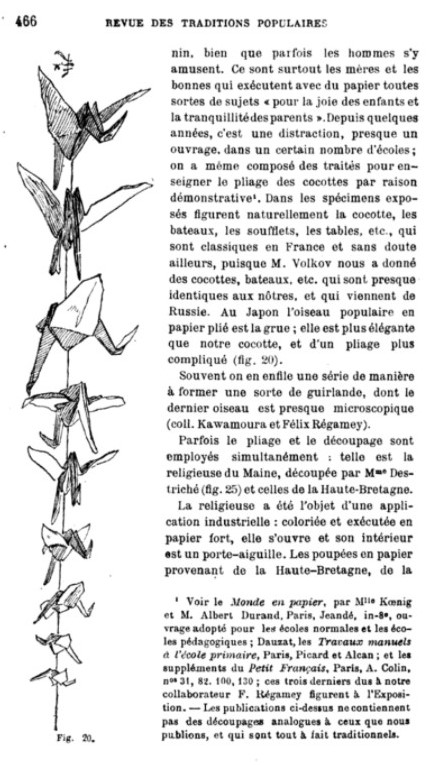| The Public Paperfolding History Project
x |
|||||||
| Revues des Traditions Populaires, 1892 | |||||||
| 'Revues
des Traditions Populaires: Tome VII - 7eme Annee' was
published in August 1892. The chapter headed 'A L'Exposition des Arts de la Femme' contains several pages about the art of paper folding and cutting. Page 466 illustrates a string of Paper Cranes but the image on the page (at the left) is printed upside down. The image to the rtight is the correct way up. **********
**********
The relevant text says, roughly, 'The art of folding or cutting paper is essentially feminine though sometimes men amuse themselves with it. It is above all the mothers and servants who make all sorts of subjects for the enjoyment of children and the tranqillity of their parents. For some time it has been an entertainment, almost work, in a certain number of schools; we have even composed treatises to teach the folding of cocottes for demonstrative purposes. Naturally, among the figures exhibited are the cocotte, boats, bellows, tables etc, which are classics in France and no doubt elsewhere, since M. Volkov has given us cocottes, boats etc which come from Russia and are almost identical to ours. In Japan the most popular folded bird is the crane; it is more elegant than our cocotte and more complicated to fold (fig. 20). Often a series (of cranes) are strung together to form a sort of garland, the last bird of which is almost microscopic (coll. Kawamoura and Felix Regamey).' The footnote mentions two books, then reads, 'and the supplements of Petits Francaise, Paris, A. Colin nos 31, 82, 100, 130; these last three due to our collaborator F. Regamey appeared at the Exhibition.' (Presumably the 1889 Exposition Universelle in Paris). All these supplements are available on Gallica. I cannot find anything to do with paperfolding in the supplements to issues 31 and 82. Supplement 100 contains a template for the Blow-up Frog (see entry for 1891). Supplement 130 contains templates for several Fold, Cut and Fold Animals. ********** |
|||||||


